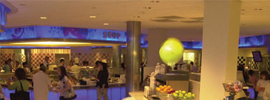24/7 Emergency Contact (901) 373-4132
(901) 828-0208
2029 Fletcher Creek Circle
Memphis, TN 38133

Green$mart Technology and Services
Today energy is often seen as a fixed cost for the business as a whole, rather than as a component of production and service. Valuing energy in terms of corporate productivity enables an organization to place energy on equal footing with labor, material, capital and other operational expenses. Energy projects carry some of the more attractive returns and lowest risk. New energy-efficient equipment, if installed and commissioned properly, will provide a sustained and predictable return on investment. Capital investments that reduce energy consumption and greenhouse gas emissions have a strategic long-term value and competitive advantage that grows each time energy prices increase.
According to the U.S. Department of Energy, in 2005 $42 Billion was spent on electricity for lighting in commercial and industrial facilities. Everyone can agree that since 2005 electrical costs have increased in the United States and it appears that trend will not end any time soon.
As the global economy remains unsettled, the trend to reduce commercial and industrial electrical costs will continue to have a dramatic effect on a company's profitability. In 2006 over 30% of the total energy consumption for commercial and industrial buildings within the United States was attributed to lighting; 24.8% for the lighting systems and 5.5% for cooling due to the lighting systems' heat generation. Source: U.S. EIA
Ekmark Electric Company is proud to offer our Green$mart technology and services to our clients. This technology and service allows us to design an energy efficient alternative to your current lighting system that can reduce lighting costs by an average of 50%.
Selected Work

St. Jude's Kay Kafe with lighting by Ekmark.
Testimonial
The installation work that Ekmark Electric did was above reproach... it was some of the finest work I've seen. I must say it went much, much better than the previous contractor.
John KnightHoneywell Project Manager
KGF Lan Systems


